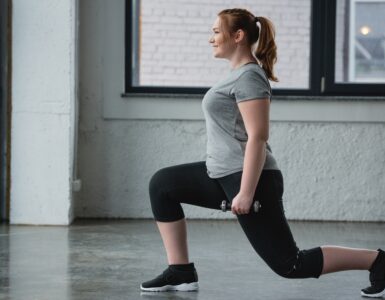Tonya Boyers of TriHive Magazine shares five things to review before you start running.
Participation in 5K road race events has soared in popularity, and is probably the favorite first race for beginners. Five kilometers, or 3.1 miles, is long enough to provide a challenge, yet not so long that it becomes intimidating. The event is still an organized race, and provides all the hype and hoopla of longer road races. Even elite racers and ultra-marathoners participate in the 5K to test their strength and speed.
Completion of a 5K is within reach of people just like you and me. I know there are people who believe the feat would simply be impossible. Some excuses include: “I’m carrying 50 extra pounds and can’t possibly run with that weight,” “I don’t have time to train,” or “I’m too old to start.”
If you can walk from the fridge to the TV remote, you can probably finish a 5K. Every size and shape is represented among race finishers in most events. I am a full-time mother of three children and involved in a triathlon-centered business. Like other recreational runners, I have to fit training around family, carpools, and other commitments. If you make it a priority, you can find enough time to train for this short distance event. Lastly, most 5K races have age division groupings clear up to 70+. In 2008 three participants over the age of 70 finished the popular Running With Angels 5K, at Thanksgiving Point.
With this in mind, here are 5 tips to help you reach that 5K Goal:
REGISTER FOR AN EVENT
Pick a race that is six to eights weeks away, and then actually sign up and pay your registration fees. Mark the date in bold on your calendar. The 5K now becomes a real goal, with a real completion date. Also include scheduled workouts from your training plan on your calendar so they become as important as any other “to-do” item. Many times during your training, that 2-mile run will be the last thing you want to do. Your official entrance to the race will motivate you to get out the door on those days. How many times have you said, “I am going to start running tomorrow?” It didn’t happen because, in reality, you weren’t committed.
GET DOCTOR APPROVAL
The heart is a muscle and may be weak and flabby if you haven’t been exercising it. Get a check-up and discuss your intentions to run a 5K during your visit. Then follow physician advice over any training plan.
START SLOW
If you don’t follow this rule, you may become one of the nearly 80% of new runners who quit after just a few weeks. That first day on the road you may exhaust yourself and feel as though you hate the sport of running. Your first run should not feel hard, in fact you may not even break a sweat. If you feel nauseated, have sharp cramps, or burning lungs you are running to fast. Often, new runners are told to jog/walk at certain intervals for the first few weeks of a training plan, thus allowing your body to adapt to a new regimen. For example, your workouts may consist of a two minute run then a one minute walk, repeated until you have reached the desired distance or length of time.
Click HERE to download a 5K Training Plan
FIND A TRAINING PARTNER(S)
Early morning or late night sessions in the pool, on the bike, or pounding the pavement are so much easier, more fun, and more motivating when done with others. You will likely keep your workout appointments when someone is waiting for you to show up. And, you are more likely to stick with the overall training plan if you have a buddy. Often this training buddy becomes a life-long friend and confidant. Your partner can be much older or much younger, have similar interests or nothing at all in common with you (except for a 5K goal), but this partner needs to be at a similar fitness level. You don’t want to become discouraged because you can’t keep up. If you can’t find a partner on your own, call your local running store or fitness center to ask about running and triathlon clubs.
EAT TO RUN, DON’T RUN TO EAT
First, don’t skip breakfast. Your body needs that fuel to survive the day. Second, don’t let all your hard work and persistence go to waste by feeding your body junk. Make the effort to feed yourself high quality, non-processed, whole foods. Eat lean proteins (poultry and fish), quality carbohydrates (fruits and vegetables), and dark greens (iceberg lettuce has very little nutritional value). The healthiest foods are those as close to their natural state as possible, such as raw vegetables packed with nutrients needed to repair the body in training. Third, drink plenty of water.
Come race day, eat a good breakfast, relax, and plan your celebration. While only one individual will win the race, the rest of the pack will experience victory in merely crossing the finish line. This is the reason the sport is exploding in popularity. Those who finish behind the pack are not ashamed; in fact they get louder cheers than the winners. After the race is over, treat yourself to something great as a reward for achieving your goal: dinner out, an afternoon at the spa, perhaps a new pair of running shoes.
Whatever the reason for starting a 5K training plan, finishing any race can be a life-changing event. Training is hard and takes commitment. When you push hard to the finish line of a 5K, you realize your potential to do so many other hard things in life, physical or not. Runners agree their lives are richer, healthier, and just plain better than they would be without the sport.
Tanya Boyer is the new managing editor for TriHive magazine. Her main job, however, is that of mommy to three young children and wife to the most patient man in the world. Tanya received a BS in Business Management from Brigham Young University and a MBA from the University of Michigan. Her business experience includes working as a financial analyst for a Fortune 500 company and as a strategic planner for a small joint venture through the initial public offering. After so much time sitting at a desk, and giving birth to her first and second child, Tanya decided she needed to get back in shape. Three years and one more child later, swimming, biking, and running have taken over her minimal spare time. Her husband is also an avid runner and she loves being able to share the sport with her family. This is her way of staying young and mobile.
TriHive Magazine is an information source for runners and triathletes in the Mountain West. To register for a free subscription, visit www.trihive.com.















Add comment